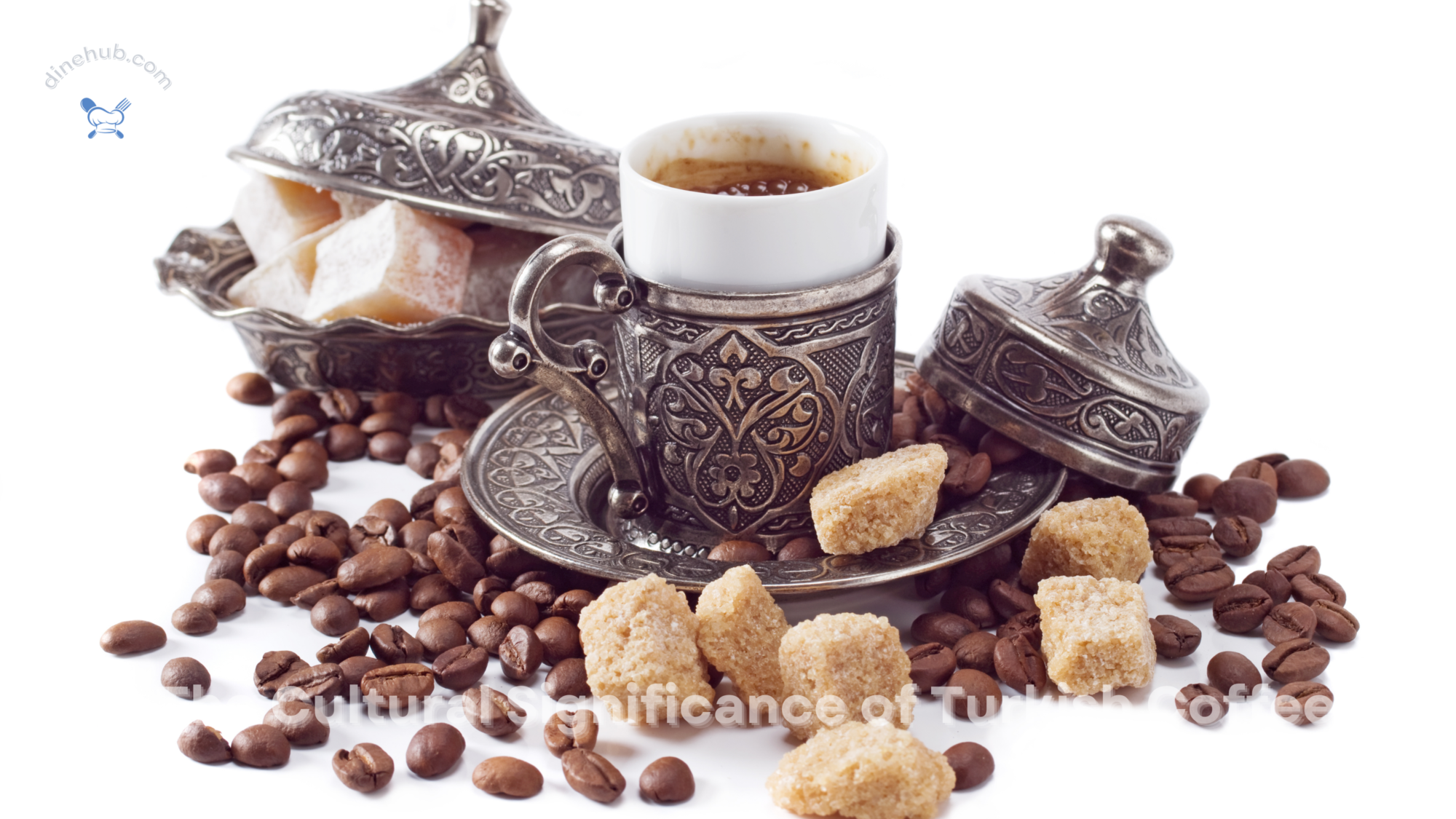Turkish Coffee is a traditional beverage known for its rich flavor and unique preparation, offering coffee lovers an exceptional and authentic experience.
Turkish Coffee holds a special place in the hearts of coffee enthusiasts around the world. Known for its rich flavor, thick texture, and unique preparation method, this traditional beverage has been an integral part of Turkish culture for centuries. Unlike other coffee types, it is unfiltered, allowing the finely ground beans to settle at the bottom of the cup, creating an intense and aromatic experience. This article explores the history, preparation, and cultural significance of this coffee, highlighting why it remains a beloved choice among coffee connoisseurs.
The Origins and History of Turkish Coffee
1. A Rich Cultural Heritage

This type of coffee has a long and storied history that dates back to the Ottoman Empire. It was introduced to Istanbul in the 16th century and quickly became a significant part of Turkish culture. The drink was enjoyed in homes, coffeehouses, and even the royal palace. Its popularity spread across the Middle East, Europe, and North Africa, making it a symbol of hospitality and social interaction.
Historical Highlights:
- Coffeehouses, known as “kahvehane,” became popular social hubs in the Ottoman Empire.
- Recognized as an Intangible Cultural Heritage by UNESCO in 2013.
- The traditional preparation and serving methods have been passed down through generations.
Unique Preparation and Brewing Techniques
2. The Art of Making Turkish Coffee

The preparation of this beverage is an art form that requires skill and precision. It is traditionally brewed in a special pot called a “cezve” or “ibrik,” which is designed to handle the fine coffee grounds and high heat. The brewing process involves mixing finely ground coffee with water and sugar (if desired) in the cezve and slowly heating it until it froths. The coffee is then poured into small cups, allowing the grounds to settle at the bottom.
Steps to Prepare:
- Measure the water: Use a small cup to measure the water needed for each serving.
- Add coffee and sugar: Combine the finely ground coffee and sugar (optional) with the water in the cezve.
- Stir and heat: Stir the mixture and place the cezve over low heat. Do not stir once the coffee starts to heat.
- Watch for froth: As the coffee heats, a froth will form. Remove from heat just before it boils and pour into cups.
The Flavor Profile and Experience
3. A Rich and Bold Taste
The flavor profile is distinct and robust. The unfiltered nature of the drink allows the natural oils and fine particles of the coffee to remain, creating a thick, rich consistency. The first sip is often strong and intense, with a lingering, aromatic finish. This unique taste is what makes this coffee a favorite among those who appreciate a bold and full-bodied brew.
Flavor Characteristics:
- Rich and full-bodied
- Slightly bitter with natural sweetness
- Aromatic and intense
The Cultural Significance of Turkish Coffee

4. A Symbol of Hospitality
In Turkish culture, offering coffee is a gesture of hospitality and friendship. It is customary to serve it to guests, often accompanied by a glass of water and a sweet treat, such as Turkish delight or baklava. The preparation and serving of coffee are seen as acts of respect and care, making it an integral part of social interactions and ceremonies.
Cultural Practices:
- Often served during marriage proposals, symbolizing the families’ approval and goodwill.
- Fortune-telling, known as “tasseography,” is a popular practice where the coffee grounds left in the cup are read to predict the future.
- Special occasions, such as holidays and celebrations, often feature this beverage as a central element.
Common Challenges and Solutions
5. Achieving the Perfect Froth
One of the challenges in making this coffee is achieving the perfect froth. The froth, or “köpük,” is a key characteristic of well-prepared coffee and requires careful attention during brewing.
Solution:
- Use fresh, cold water and finely ground coffee.
- Stir the coffee mixture well before heating but avoid stirring once the heat is applied.
- Heat the cezve slowly over low heat to allow the froth to form gradually.
6. Preventing Overboiling
Another challenge is preventing the coffee from overboiling, which can affect the taste and texture.
Solution:
- Watch the coffee closely as it heats and remove it from the heat just before it boils.
- Pour the coffee into cups immediately after removing from heat to preserve the froth.
Table: Key Elements of Turkish Coffee
| Element | Description |
|---|---|
| Cezve/Ibrik | Traditional pot used for brewing |
| Fine Coffee Grounds | Finely ground beans, almost powder-like |
| Froth (Köpük) | The foam that forms on top during brewing |
| Serving Style | Small cups with a glass of water and a sweet treat |
| Cultural Practices | Symbol of hospitality, used in social interactions and ceremonies |
FAQs about Turkish Coffee
1. What is the difference between this and other types of coffee? It is unfiltered, brewed in a special pot called a cezve, and has a thick, rich consistency with fine grounds at the bottom.
2. How do you make it without an ibrik? You can use a small saucepan as an alternative to an ibrik, following the same preparation steps.
3. What makes the froth unique? The froth, or köpük, is achieved through slow heating and careful preparation, giving it its distinctive texture.
4. Can it be made with different types of coffee beans? Yes, while traditional Turkish Coffee uses Arabica beans, you can experiment with different types of beans to achieve various flavors.
5. How is it served? Typically served in small cups with a glass of water and a sweet treat like Turkish delight or baklava.
6. What is tasseography? Tasseography is the practice of reading coffee grounds left in the cup to predict the future, commonly done with this coffee.
7. Why is it recognized by UNESCO? Recognized as an Intangible Cultural Heritage by UNESCO for its deep cultural significance and traditional preparation methods.
8. Is it always sweetened? It can be enjoyed with or without sugar, depending on personal preference.
Conclusion
This coffee is more than just a beverage; it is a cultural treasure that embodies the rich history and traditions of Turkey. From its unique preparation method and bold flavor profile to its significance in social and ceremonial practices, Turkish Coffee offers an unparalleled experience. Whether you enjoy it for its taste or its cultural connections, it remains a cherished choice for coffee enthusiasts worldwide. Embrace the art of making and savoring this coffee and discover why it continues to captivate hearts and palates. Please follow our blog Dines Hub.



